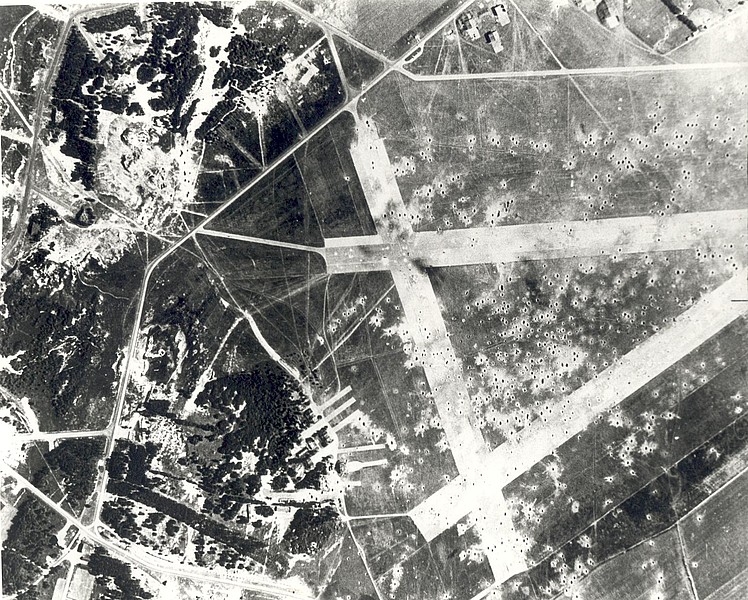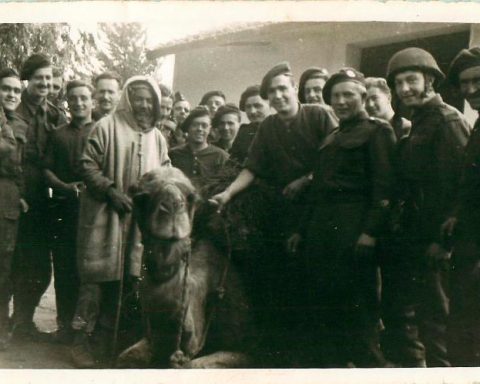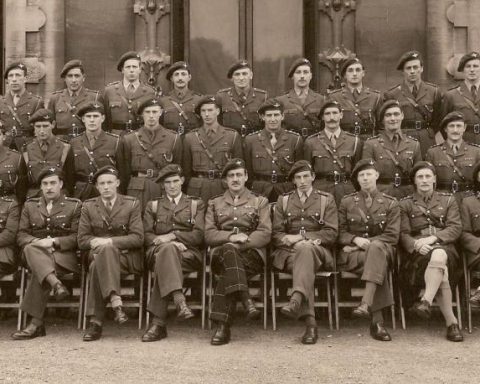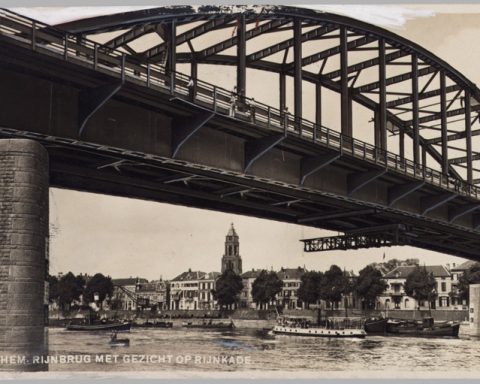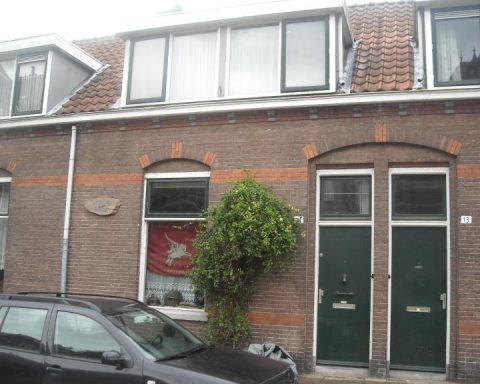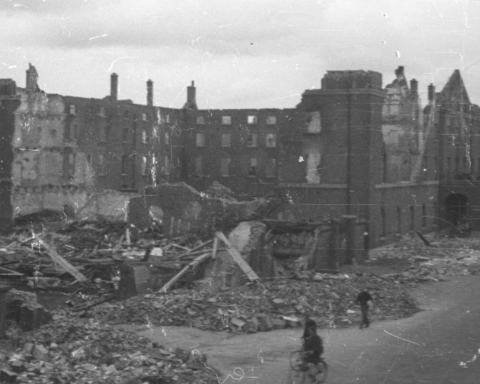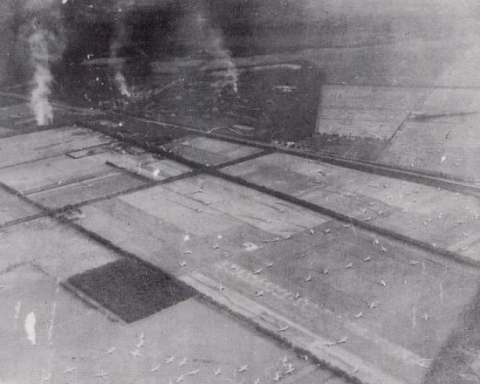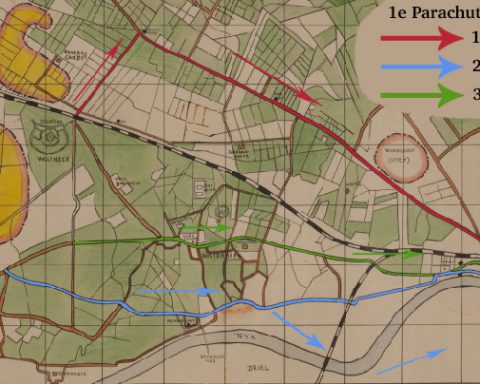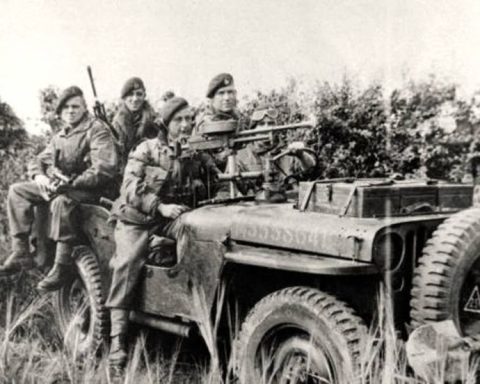There are still many myths circulating about the Battle of Arnhem for so many decades afterwards. One of those myths is that the plans for Operation Market Garden had no role whatsoever for the German airbase Deelen, just north of Arnhem.
Fliegerhorst Deelen was built by the Germans in 1940 as part of Germany’s air defense immediately after the occupation of the Netherlands. In 1944, Deelen was one of the largest airfields in Europe.
Arnhem airfield played a major role in the air war over Germany. Deelen was on the approach route of the English bombers that attacked targets in the Ruhr area almost every night. The German night fighters stationed at Fliegerhorst Deelen aimed to take down the English bombers.
After the failure of Operation Market Garden, many people have expressed surprise that the British have not used the airport in the attack plans. An airborne landing at Deelen seemed so logical. After all, with a usable airfield in hand, reinforcements and heavy equipment could be supplied directly by air. However, the British landed at Wolfheze, 9 miles from Arnhem and not at Deelen airfield, just 2 miles from Arnhem.
Nevertheless, the British planned to use the Deelen airport. However, because Market Garden failed, it never happened.
What exactly?
It seems strange that the British missed the opportunity to use one of the largest airfields in Europe during the airborne landings near Arnhem. In previous major airborne operations during World War II, the occupation of an airfield was often the primary objective of the airborne troops.
During the raid on the Netherlands, on May 10, 1940, the Germans had dropped Fallschirmjäger near The Hague at no fewer than three different airports in an attempt to break the Dutch resistance quickly.
A year later, during airborne landings in Crete, an airfield on the west side of the island was the primary target of the Germans. After the airfield was captured, German reinforcements brought in by air flowed across the rest of Crete. The British were forced to withdraw.
Flak guns
In September 1944, the British did not dare to use the Deelen airfield in the same way. First of all, the British Royal Air Force’s Troop Transport Command was apprehensive of the German anti-aircraft guns around the airfield. Many of the slow British transport aircraft would be shot from the air by Flak guns.
The presence of the anti-aircraft guns was also a reason not to land troops in the vicinity of the Rhine Bridge. The British planes would then have to run exactly at Deelen airfield.
The British also suspected that the German resistance around Deelen airfield would be the greatest. It was feared that hundreds of German troops would battle with British airborne troops immediately after the airborne landings.
In retrospect it has been established that at that timeonly s few Germans were stationed around the airfield. Deelen was largely evacuated by the Germans, but the British were not aware of that at the time.
A third reason to land somewhere else was that the British concluded that they would have little use for the airport at first. The bombings in the weeks before had severely damaged the runways. The airfield was actually unusable. Heavy equipment was needed to refurbish the airfield, and the British airborne troops were unable to do so.
Original plan
However, in the original Market Garden plan, British troops would land at Deelen airfield. In fact, an entire British division would land at Deelen. However, that landing would not take place at the beginning of Market Garden, but at the end of the attack.
In the original plan, the British airborne troops would occupy all of Arnhem. Much German opposition was not expected. To the west, north and east of Arnhem, the British would take up defensive positions. If the pressure of any German counter-attacks became too great, the British would retreat street by street towards the center, until they were relieved from the south by the XXXX corps ground troops.
XXX corps led by General Harrocks would then push through to the north and occupy Deelen airfield. The airstrips of the airport would then be repaired as soon as possible so that the British 52nd Lowland Division, some 10,000 men, could be flown in.
Together with the 52nd Lowland Division, XXX-Corps would then advance to the IJsselmeer to cut off the German 15th army in the west of the Netherlands. After that, the road to Berlin was completely open.
It went differently, of course. The German resistance near Arnhem was much stronger than what the British had expected, and shortly after the airborne landings it was clear that the original plan could be thrown in the trashbin.
The British 52nd Lowland Division did play a role in the liberation of the Netherlands, but not during the Battle of Arnhem. In October 1944, the division was deployed in Zeeland at the Battle of the Scheldt. The aim was to guarantee a safe shipping route to the port of Antwerp.
In 1961, the 52nd Lowland Division received a commander who had fought during the Battle of Arnhem. The commander’s name? John Frost.

